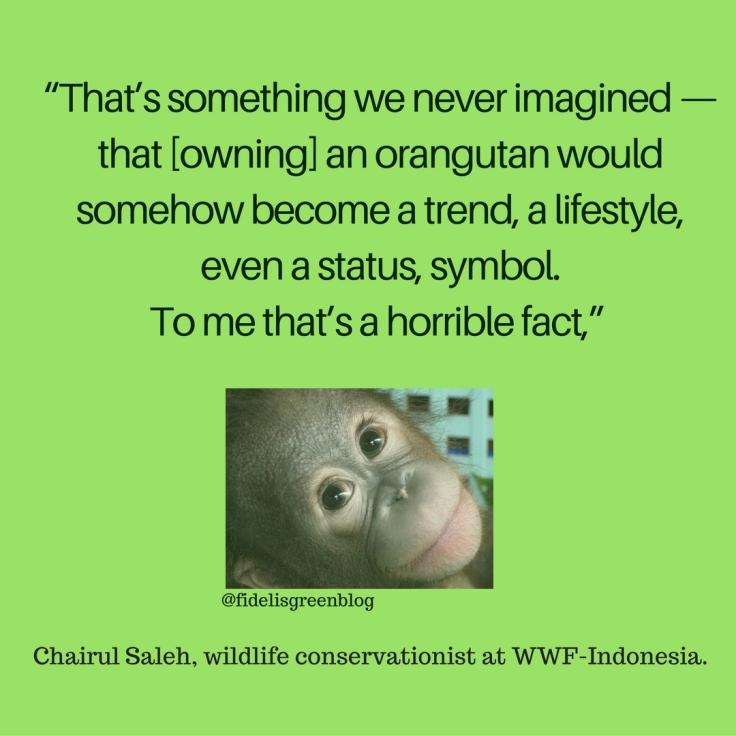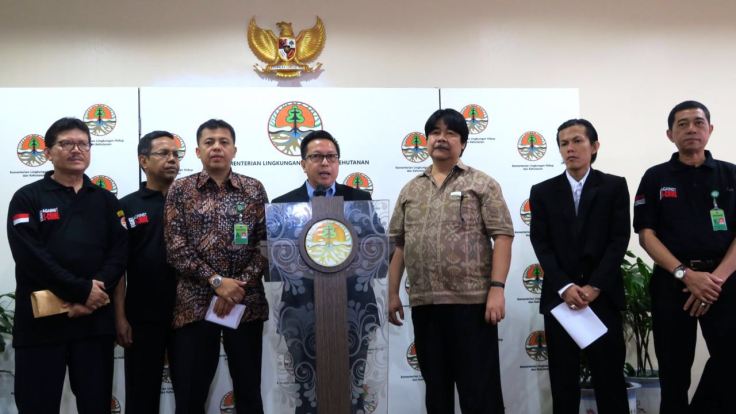Mangkraknya pembangunan 34 proyek PLTU yang berujung pada kerugian triliunan rupiah menandakan bahwa pemerintah ‘berantakan’ dalam tata kelola energi.
Hal tersebut disampaikan oleh Merah Johansyah, Koordinator Nasional JATAM, saat dihubungi Mongabay.co.id beberapa waktu lalu.
Berdasarkan Perpres No.71 tahun 2006 dan Perpres No.4 tahun 2010 di mana PLN harus mempercepat pembangunan listrik 7000 MW.
Namun, Sekretaris Kabinet Pramono Anung mengumumkan kepada wartawan bahwa ada 12 dari 34 proyek dipastikan tidak dapat dilanjutkan dan ada kerugian negara sebesar Rp3,76 triliun.
Ke-34 proyek yang mangkrak merupakan bagian dari Fast Track Program Tahap 1 pada tahun 2009, pada pemerintahan sebelumnya. Jumlah investasi hampir mencapai lima triliun rupiah.
Ke-12 pembangkit tersebut, PLTU Kuala Tungkal (2×7 MW) di Jambi, PLTU Bengkalis (2x10MW) di Riau, PLTU Ipuh Seblat (2x3MW) di Bengkulu, PLTU Tembilahan (2,5,5 MW) di Riau, PLTU Sampit (2x25MW) di Kalteng, PLTU Buntok (2×7 MW) di Kalteng, PLTU Kotabaru (2x7MW) di Kalsel, PLTU Tarakan (2×7 MW), di Kalut, PLTU Bau Bau (2×7 MW) di Sultra, PLTU Raha (2×3 MW) di Sultra, PLTU Wangi Wangi (2×3 MW) di Sultra, PLTU Kaibumui (2,6 MW) di Maluku, dan PLTU Jayapura (2×15 MW) di Papua.
Namun, dalam perkembangan terbaru, PT Perusahaan Listrik Negara (PLN) menyatakan bahwa 17 dari 34 proyek tersebut dilanjutkan, enam proyek diambil alih oleh PLN, sementara 11 proyek diputus kontraknya.
Lebih lanjut, Merah mengatakan bahwa tidak hanya salah kelola tetapi ada indikasi korupsi akibat tidak transparan.
“Buktinya, proyek tersebut justru menimbulkan kerugian negara. Proyek-proyek tersebut justru menjadi bancakan bagi para pemburu proyek di ESDM dan pemerintahan Jokowi sendiri,” tegas Merah yang juga mencurigai motif dari pembangunan PLTU akibat tidak adanya keterlibatan masyarakat.
Sementara itu, Leonard Simanjuntak, kepala Greenpeace Indonesia, berharap bahwa penghentian tersebut membuat pemerintah untuk berpikir ‘out of the box’.
“Kami ingin bilang kalau dominan batubara berarti kita deal dengan aktor-aktor yang dominan secara politik,” jelasnya. “Berdasarkan pengalaman Indonesia, kalau aktor-aktornya dominan secara politik, governance yang bersih dan akuntabel akan susah ditegakkan makanya kita punya yang mangkrak-mangkrak ini.”
Ia pun mendorong agar pemerintah bisa serius mengeksplorasi energi terbarukan.
“Coba dieksplore, kalau mangkrak di fossil fuel, coba pikir gimana renewables energybisa gantikan itu. Kalau mau berpikir begitu, berarti pelaku bisnisnya baru yang kait mengait tidak sedominan sekarang,” tegasnya. “Let’s have a new game. A new ball game yang baik untuk semua, untuk pemerintah, kompetisi bisnis lebih jujur dan transparan.”
Berdasarkan Peraturan Pemerintah (PP) Nomor 79 Tahun 2014 tentang Kebijakan Energi Nasional, porsi energi terbarukan mencapai 23 persen pada tahun 2025 dan paling sedikit 30 persen pada tahun 2050.
Namun, hingga tahun 2016, Indonesia baru bisa memanfaatkan satu persen atau 8.215,6 MW dari total potensi 801.311 MW, — panas bumi, air, bioenergi, surya, angin dan laut –.
Direktur Eksekutif Institute for Essential Services Reform (IESR), Fabby Tumiwa, mengatakan bahwa proyek-proyek tersebut sudah dibiarkan mangkrak selama sepuluh tahun sehingga harus dipertimbangkan kembali kondisi dan kebutuhan daerah-daerah tersebut.
“Itu kan memang proyek-proyek kecil, hanya 2×5 MW. Sudah dirancang pada tahun 2006-07 dan bagian dari Fast Track Phase Satu. Saat itu kan kondisi listrik berbeda dengan sekarang. Apakah memang masih dibutuhkan? Kalau iya, harus disesuaikan dengan mempertimbangkan kondisi di daerah tersebut,” jelas Fabby.
Ia mengatakan bahwa PLN sedang mempertimbangkan membangun PLTMG (Pembangkit Listrik Tenaga Mesin Gas) namun masih menggunakan BBM.
“Kalau opsi BBM, berarti harus dipikirkan [pasokan] solar,” lanjutnya. “Bisa saja dengan RE [renewable energy] tapi harus sesuai dengan demand dan profile daerah setempat. Bisa nggak digunakan biofuel atau kalau ada biomassa.”
Sementara itu, Merah menegaskan dengan adanya kasus mangkrak, pemerintah harusnya tidak lagi melanjutkan pembangunan 35000 MW yang mayoritas, atau lebih dari 60 persen, menggunakan batubara.
Penyediaan listrik sebesar 35000 MW merupakan kebijakan lanjutan dari 10000 MW yang sudah dicetuskan sejak pemerintahan Susilo Bambang Yudhoyono.
Sebanyak 35 proyek dengan total kapasitas 10.681 MW akan dibangun oleh PLN dan 74 proyek dengan total kapasitas 25.904 MW akan dibangun oleh swasta (Independent Power Producer/IPP).
Dimulai pada tahun 2015, keseluruhan proyek tersebut diharapkan bisa diselesaikan pada tahun 2019.
Namun, pembangunan ini ditentang oleh para aktivias lingkungan karena hampir 60 persen pembangkit listrik akan menggunakan batubara yang berpotensi untuk menambah emisi gas rumah kaca dan meningkatkan risiko gangguan kesehatan.
Dalam perkembangan terbaru, akibat ketergantungan batubara untuk kebutuhan listrik, Indonesia mendapatkan Fossil of the Day Award, sebuah penghargaan sindiran dari para aktivis lingkungan internasional yang tergabung dalam Climate Action Network (CAN) dan diumumkan di perundingan perubahan iklim yang sedang berlangsung di Marrakech, Maroko.
Merah mengatakan bahwa Indonesia sudah memiliki komitmen terhadap perjanjian perubahan iklim yang artinya harus bisa menjaga suhu bumu di bawah 1,5 derajat Celsius yang mau tidak mau harus diikuti dengan komitmen energi yaitu, zerobatubara.







Recent Comments